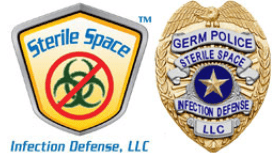Sports and athletics are great ways to have fun and get needed exercise, but they’re also common disease vectors. Contact sports and activity outdoors by its nature increases risk of disease and infections. Athletes are at risk of certain bacterial, fungal, and parasitic infections that other groups would not otherwise experience.
Why Sports Spread Disease
Athletes spread infections from close contact and injury. Infections spread easier through damaged skin or tissue, so a lesion or cut is an easier opening for bacteria to enter. Hygiene is another concern – sweat and dirt are filled with disease-causing germs, and contact sports can spread these germs among players.
Types of Diseases: Bacterial
Bacteria are what most people think of when they think of germs. They are single-celled organisms present all over the world. While most bacteria are completely harmless, others can cause some particularly nasty diseases.
Methicillin-resistant Staphylococcus aureus (MRSA), for example, is a type of staph infection that is resistant to most types of treatment and antibiotics. Staph bacteria are present in most people already, but not the resistant strains, and is usually harmless. Unfortunately, MRSA is a dangerous infection that often spreads quickly between infected populations. MRSA spreads most commonly through direct contact, so if one athlete is already sick, it can easily spread to the rest of the team.
Another common disease is spread from strep bacteria – impetigo – a scabby, yellow rash that can cause small, uncomfortable lesions in the skin. Much like MRSA, it spreads with direct contact. Luckily, though, it’s not particularly dangerous – it’s mostly uncomfortable and painful, but not severe.
Viruses
Viruses are small, non-living disease-causing critters that cause most illnesses. They do not respond to antibiotics and can cause a few nasty diseases. One common athletic viral infection is Herpes gladiatorum – or “mat herpes,” which is a skin disease that causes unsightly, unpleasant skin lesions on the face. Most people have encountered herpes of some kind in their life – though most of us don’t develop symptoms. Though most people associate herpes with sexual activity, the herpes STD is a different virus. Traditional herpes can spread through any form of direct contact, including sports.
Other viral infections are more obvious – the common cold and flu and easily spread. Though unpleasant, receiving a cold from sports is not something to worry about too much.
Fungal Infections
There are common fungal spores that can spread disease between athletes. One type, known as dermatophytes, can cause a few different common diseases. A dermatophyte, for example, causes ringworm.
Contrary to the name, a worm is not the cause of ringworm; its name comes from the ring-like, thin rash that forms on the skin’s surface. Bald patches may develop on the scalp, and skin will likely be itchy and red to the touch. Ringworm is not normally dangerous, but it should be treated by a medical professional.
Dermatophytes can also cause athlete’s foot and jock itch. As with other sports-related diseases, direct contact spreads fungus and can be a common cause of infection.
Additional Resources:
https://www.health.ny.gov/diseases/communicable/athletic_skin_infections/bacterial.htm#impetigo
https://www.health.ny.gov/diseases/communicable/athletic_skin_infections/herpes.htm
https://www.health.ny.gov/diseases/communicable/athletic_skin_infections/fungal.htm
https://www.nytimes.com/2017/09/25/well/family/when-athletes-share-infections.html
https://www.aad.org/media/news-releases/athletes-prone-to-a-rash-of-skin-conditions
https://www.checkupnewsroom.com/7-skin-conditions-young-athletes-need-to-know-about-and-7-ways-to-protect-against-them/




